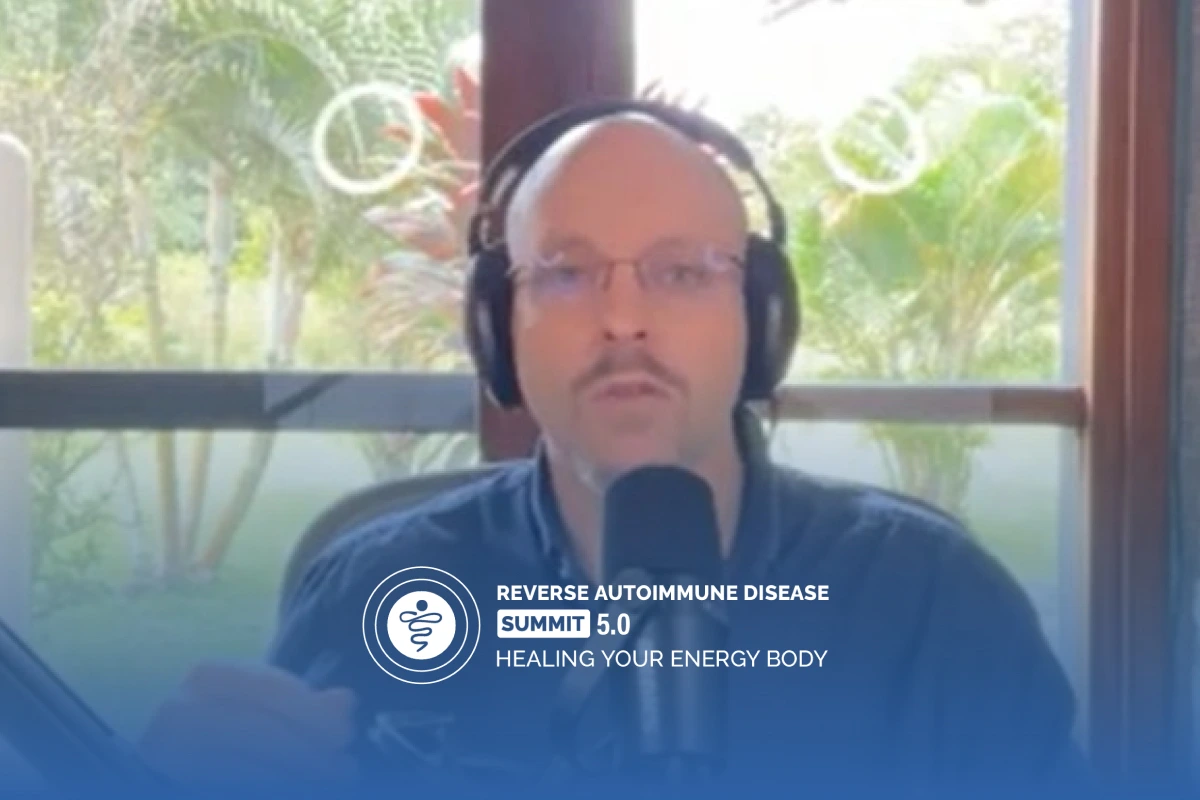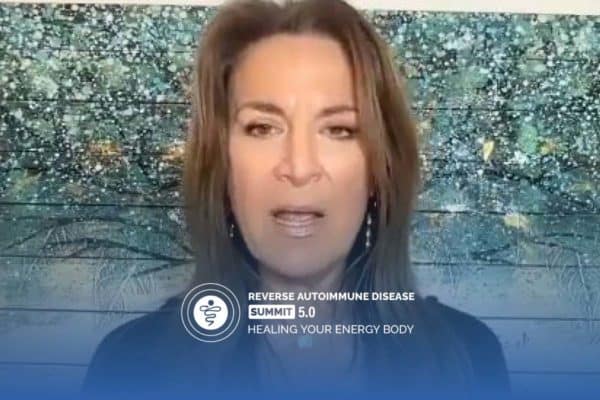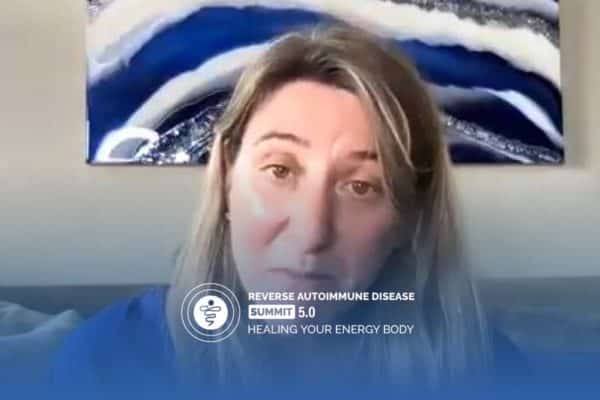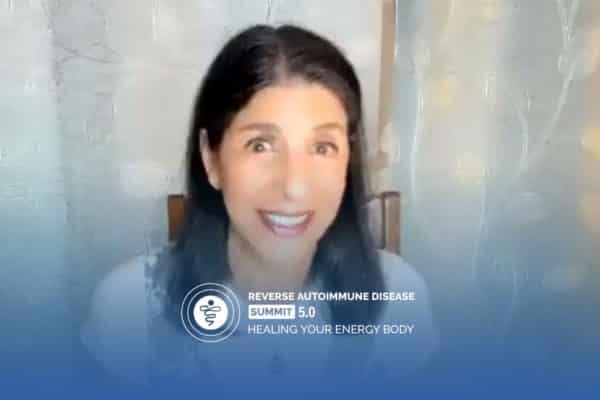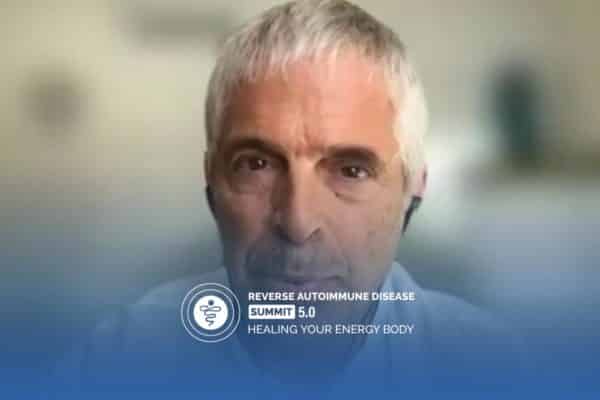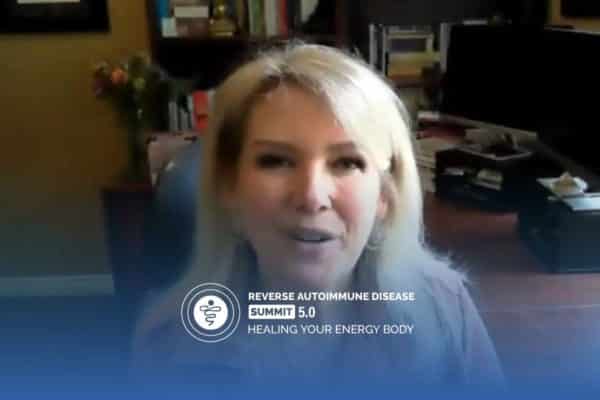Join the discussion below
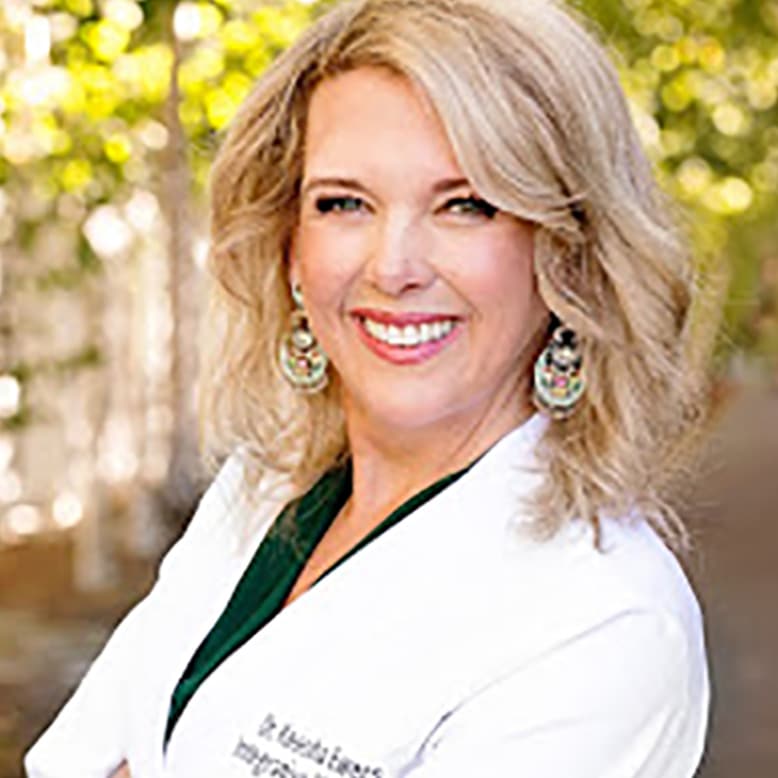
Keesha Ewers, PhD, ARNP-FNP-C, AAP, IFM-C
Dr. Keesha Ewers is an integrative medicine expert, Doctor of Sexology, Family Practice ARNP, Psychotherapist, herbalist, is board certified in functional medicine and Ayurvedic medicine, and is the founder and medical director of the Academy for Integrative Medicine Health Coach Certification Program. Dr. Keesha has been in the medical field... Read More

R is an entrepreneur, technologist & author. He is the CEO of Shield Your Body, which creates products that make it easy and affordable for people to reduce their exposure to wireless radiation from devices like cell phones and laptops. And, along with his father, Dr. Martin Blank, he co-authored... Read More
- Find out ways to verify EMF protection product claims before buying
- Get to know EMF protection products that are actually based on science
- Learn to interpret laboratory test results
Keesha Ewers, PhD, ARNP-FNP-C, AAP, IFM-C
Welcome back to the Reverse Autoimmune Disease Summit Series, everybody. This is the Healing Your Energy Body, fifth version, and I’m delighted to be talking about deciphering EMF protection product claims with R. Blank, who is the CEO of Shield Your Body, whose mission it is to make technology safer. Hundreds of thousands of customers in over 30 countries and having been interviewed on platforms ranging from ABC Television to Electric Sense, R. is an internationally-followed expert on issues of EMF health and safety. He was inspired to create SYB when he co-authored the best selling book Overpowered with his father, Dr. Martin Blank, one of the world’s leading EMF scientists. He has degrees from Columbia University and UCLA, and now hosts the new Healthier Tech podcast. That’s a great podcast subject, healthier tech. Welcome to the summit series.
R Blank
Hi, thanks for having me.
Keesha Ewers, PhD, ARNP-FNP-C, AAP, IFM-C
So Electric Sense of course, is my co-host from the last summit that we did about the energy body, and it’s how I found your work. We had Lloyd Burrell. I would love to just start at the ground here and say what are EMFs, for people that are still figuring this out?
R Blank
Sure, yeah, great question. Great starting point. EMFs are a form of energy that are made from the combination of forces of electricity and magnetism. They are effectively almost entirely all invisible forces that are created in the world around us by anything that runs on electricity and anything that communicates wirelessly. Now there’s some other forms of EMF as well. One that we all know is visible light. Visible light, like we get from the sun, that is a form of EMF energy. Now there’s certain forms of EMF with much more energy than visible light, and these are things like X-rays and gamma rays, and they have so much energy that they can knock electrons loose from our cells, and that’s why we call them ionizing, because they can ionize our cells.
And we all know, and it’s universally accepted, 1,000% non-controversial that those forces are very harmful, even in very, very, very small doses, which is why when you get a dental X-ray, they cover you in lead and leave the room, because we all know this stuff is super harmful. Then there are forms of EMF with less energy than visible light, and they don’t have the same amount of energy, so they can’t ionize our cells in the same ways, and that’s why we call them non-ionizing. It was long thought that these were inert forms of EMF, that they were effectively harmless to us and all living things at levels where they don’t cause us to heat up, and these are the forms that are emitted by power lines, electrical appliances, cell phones and wifi, and so forth. Now, while it was long thought that they were inert, biologically inert, it turned out, and as more recent decades of science have shown us, that those assumptions were false and that they have biological effects, even at very, very, very low doses, much lower than you would be exposed to, for instance, by talking on a cell phone.
Keesha Ewers, PhD, ARNP-FNP-C, AAP, IFM-C
So this is really important, because we’re surrounded now. What are the sources, because this leads us to the discussion about protection from, but let’s think about, now that we know what EMFs are, what are the sources?
R Blank
It’s increasingly everywhere around us. Even if someone like me thinks back to when I was a kid, the differences are staggering in terms of how much we’re exposed to. Big ones tend to be cell phones because, and we can talk about this in a bit, but because of how close to our bodies we carry them. The power of EMF radiation diminishes exponentially with distance. Even if the cell tower a mile away is much more powerful than the phone in our pocket, odds are we’re getting exposed to much more powerful radiation from the phone in our pocket than the cell tower that’s a mile away. But it’s everything that communicates wirelessly, so that’s no longer just cell phones and even just wifi. It’s Bluetooth, it’s smart thermostats, it’s smart refrigerators. It’s this entire wireless infrastructure that exists around us. Increasingly, it’s not even just from the planet.
We have orbiting satellites that are transmitting networks down to terrestrial level, and so anything that communicates wirelessly. Then we also have a separate set of exposures that come from anything that runs on power. That includes power lines, power transformers, electrical appliances in the home, even the wiring in our walls. Now when you take all of this together, the amount of the world that has become electrified and the amount of the world that has become wirelessly connected, we are talking about an incredible number of exposures. The more urban an area you live in, the more exposed you are going to be, and that just comes from the type of densification that is a feature of urban life compared to rural living where there’s a fewer neighbors, less infrastructure, fewer towers and so on and so forth. But it is increasingly challenging for people to find places on the planet where there are no exposures. That used to be easier, and now it is just not that easy.
Keesha Ewers, PhD, ARNP-FNP-C, AAP, IFM-C
You have palm trees behind you . Is the area where you live something that’s conscious for looking at that? I know we have a place on San Juan Island, and that was one of our conscious decisions, was trying to get into a more pristine atmosphere, so to speak.
R Blank
Yes, for sure. To me, cities are for visiting. They’re not fit for human life. Cities are a ton of fun. They provide a tremendous amount of benefit and resources for people, economic opportunity, healthcare infrastructure. Cities are amazing, but increasingly they are just very, very stressful. I don’t mean that just in the emotional way. I’m talking about all the physical and physiological stressors that we are being exposed to effectively on a nonstop basis once you’re in an urban environment. As I’ve gotten older and of course the amount of EMF in the atmosphere and the environment has increased, I find it increasingly challenging to have a satisfying night of sleep in a city compared to how I used to feel or how I feel here at home.
Keesha Ewers, PhD, ARNP-FNP-C, AAP, IFM-C
Yeah, I agree. That’s my experience, too. So what is EMF protection, then?
R Blank
EMF protection is anything that protects us from the harms resulting from exposure to EMF radiation. If you or someone goes online, just searches for EMF protection, even just on page one of the search results, you’ll see a lot of different kinds of options. EMF protection is not just one thing. It could be, for instance, products that block the EMF radiation, that shield it, products that claim to make the EMF inert or harmless, products that boost our resilience against the harms that come from exposure to EMF radiation, and even some that claim to be able to reverse the damage from EMF exposure. There are just a ton of different options, all of which kind of fall under this broad umbrella of EMF protection.
Keesha Ewers, PhD, ARNP-FNP-C, AAP, IFM-C
You just said you can go online and you can find a whole bunch, and it’s true. You just put the search term in, EMF protection, you’re gonna come up with so many different things. Are these regulated?
R Blank
No, not at all. EMF protection is entirely unregulated, but that shouldn’t be surprising to people when you actually think about how much of just EMF emissions are unregulated in our lives. This is just largely an unregulated area of life. There are certain exposures that are theoretically regulated, such as from cell phones, but depending on where you live in the world, there are whole bunches of exposures that aren’t regulated at all. One that I tell people a lot, because it’s just everywhere, is power line emissions. Unless you are a utility worker or working in a power plant, if you’re just a consumer living in your home or walking down the street, the amount of EMF that you’re exposed to from any nearby power lines is unregulated. Another unregulated area is cars, at least as far as I can tell, and we’ve put some effort into trying to figure out what the regulations might even be, but you can’t find what the EMF emissions are for any car model that you might be interested in, which is obviously increasingly important, not just with the advent of hybrids and electric cars, but with the massive incursion of wireless technology into these cars. We’re talking about from the batteries or from the inverters, from the radial tires running on the road to the wifi that you have running, the lidar checking the street in front of you. All of these different sources in this vehicle where we all spend so much time, and you can’t even find out what the manufacturer claims is the EMF emission. The same is largely true for EMF protection. What that means is it sets this landscape where consumers are incredibly susceptible to misleading claims and false advertising, and you’ll see that a lot. Again, if you just search for EMF protection, just that broad search term, you will see a lot of things that I would argue fall under that category.
Keesha Ewers, PhD, ARNP-FNP-C, AAP, IFM-C
You know, you’re just describing the car I bought last summer, and I’m having a moment. I was looking for all of the cool safety features. Now I’m having this little, oh no. I have been very careful about not doing the, we had Alexa in our house for a hot second, and then I said oh my gosh, no. This has to go. And then we got a new oven and I said I don’t want it to be smart. I don’t want a smart refrigerator. Some of those things, but I forgot about my car.
R Blank
Yeah, I’m sorry to have brought that up.
Keesha Ewers, PhD, ARNP-FNP-C, AAP, IFM-C
Luckily I don’t spend very much time in my car. I’m in it maybe once or twice a week just to go to the grocery store. I don’t commute for long distances.
R Blank
That’s good, yeah.
Keesha Ewers, PhD, ARNP-FNP-C, AAP, IFM-C
That’s good, so I’m like okay, it’s probably not the worst thing. I also don’t do the earbuds that you just tuck in that are wireless. Those seem like that’s not a good idea.
R Blank
I totally agree. I don’t go around telling people not to use technology. I advocate for a more mindful use of technology and at least being aware of some of the costs, but when it comes to AirPods and other Bluetooth headsets, I advocate strongly against their use. It’s another example that I use to explain to people not only that this stuff is barely regulated, but it’s released into the public without any long or even medium term testing into what the health effects are or will be. We don’t know what the increased rates of cancers, for example, are going to be from AirPods, because cancers take 5, 10, 15, 20 years to form, and the AirPods are not that old.
Keesha Ewers, PhD, ARNP-FNP-C, AAP, IFM-C
Right.
R Blank
And then of course children are using these products and it’s very disconcerting. I advocate generally quite strongly against the use of any wearable wireless technology, because as I mentioned earlier, the increasing distance is a big factor in how strong your exposure is gonna be, and with wearable technology, there is absolutely no way to increase the distance, so you’re always going to be getting a full dose of the radiation that these devices emit.
Keesha Ewers, PhD, ARNP-FNP-C, AAP, IFM-C
I have the same thing about the watches and rings that are tracking your every health move. People are using them for health monitoring information, but at the same time, I’m like, you can’t sleep with this stuff, please.
R Blank
Well there are some that, and generally, if I’m asked about specific brands that I happen to know about, I’ll talk about them, but just speaking in broad terms, there are some that effectively have an airplane mode, and so they’ll be tracking you all the time, but they won’t be transmitting all the time. Those are obviously the better options when it comes to those wearable trackers.
Keesha Ewers, PhD, ARNP-FNP-C, AAP, IFM-C
And is airplane mode, does that fully shield you?
R Blank
Yeah, almost. It cuts so much of the EMF that for all intents and purposes, I say it eliminates the EMF, but anytime you have some type of electrical signal traveling on a circuit, you’re gonna get a little bit of EMF. But it cuts out so much of the EMF that I generally just tell people it eliminates it.
Keesha Ewers, PhD, ARNP-FNP-C, AAP, IFM-C
Okay, well, that’s good. I do have a shielding device that my keyboard sits on, which we’re gonna talk about this now, the science part of it. There isn’t a lot going into the study of these EMF protection and shielding devices, right?
R Blank
Yeah. Stepping back, it depends which type of device you’re talking about. When you’re talking about, for instance, EMF shielding products, which is the kind that I make and sell, you can do laboratory testing, but you commission it. It’s not published in a peer review journal. It’s someone like me going to a lab saying can you perform a test and see how much radiation this blocks? You can have that type of testing done. When it comes to the type of scientific journal research, no, that is not very well studied. There is one study I’m aware of that actually shows that a device similar to the one you’re using except it was a, oh no, sorry. In that study it was apparel, but using EMF shielded apparel will reduce or reverse autoimmune disease, which I thought was very interesting. And there was another study into a product similar to the one that you’re using there, except designed to go underneath a laptop, and that one showed improvements in male fertility.
So just by using a product like that, you can reduce the amount of damage that results to sperm as a result of the EMF exposure. When it comes to the scientific benefits of reducing your EMF exposure, a lot of that is just the logical conclusion. If a certain amount of EMF exposure leads to an increased risk of forming X, then logically reducing that exposure would reduce your risk of forming X, and so what you’re looking for is confidence and data to support that using a product will actually reduce your exposure. That’s where the types of testing that I was talking about just a minute ago, that’s where those come in. Those are called attenuation tests, and they show how much radiation is attenuated or blocked when you are using a given type of product.
Keesha Ewers, PhD, ARNP-FNP-C, AAP, IFM-C
Okay, all right. What’s the first thing a consumer should do when really evaluating these potential EMF protection products?
R Blank
The first thing I recommend that people do is actually see what the product is claiming to do, because makes EMF safe or makes your life better, those aren’t product claims. But if you look at a lot of these websites, you’ll see that’s actually what their message boils down to. That’s what they are trying to sell you. And then there’s other ones, does it claim to block EMF? Does it claim to neutralize the EMF? Does it claim to repair damage from EMF? These are all different things. They’re all different types of, they may all call themselves the same EMF protection phrase, but they’re all different things, and so you want to figure out what type of EMF protection you’re actually evaluating, what is the product claiming to do, and how is this product claiming to help me.
A lot of the time, as I was saying before, if you actually look at it, you’ll see they’re not making any real product claims at all. Those are the first set of EMF protection products that I recommend kind of just walking away from. You have to see if they’re actually making a claim or just a sales pitch. Then you’ll want to see if the claim is actually backed or backable or demonstrable through science. Are they making any claims that are measurable, that are quantifiable or not, and is there any way that you can verify that the product is, because EMF, as you well know, it’s invisible, it’s odorless, you can’t see, touch, smell, taste it. Then when you actually read about it, there are all these long confusing words. It’s just very easy to obfuscate ideas when you’re talking about EMF. You want to see if there’s some way that you can know if the product is working, so those are the first two things. Is the product actually making a claim, and if so, what is it? And then if they are, is that claim backed by science? Is there some way that I can actually know that the product is doing what it is claiming to do?
Keesha Ewers, PhD, ARNP-FNP-C, AAP, IFM-C
You mentioned earlier, we’ve talked about EMF protection and then shielding and your company Shield Your Body. What is it that we’re talking about is the difference between EMF shielding and protection?
R Blank
EMF shielding is a type of EMF protection. The technology itself is almost 200 years old, ever since a British scientist named Michael Faraday invented what became later known as the Faraday cage. What he showed was that if you weave certain conductive metals into certain patterns, you can block and deflect EMF radiation in the opposite direction, in much the same way that a window shade can block and deflect sunlight. Now since I believe it was 1836, in the almost 200 years since then, we’ve gotten a lot better about making those conductive metals into really, really small fibers. Like in my baby blanket, they’re thinner than the width of a human hair, the silver fibers that go in there. You can weave these very, very thin metallic fibers into fabrics and you can create these shields that block and deflect radiation in the other direction. That is what EMF shielding is, and that is how we at SYB use it in all of our products to reduce your exposure to EMF radiation. Because, like I said, it blocks and deflects, it’s testable. It’s testable in a lab, it’s testable by you at home, because you can take a meter and see is this actually working to reduce the amount of EMF that’s getting through.
Keesha Ewers, PhD, ARNP-FNP-C, AAP, IFM-C
Talk about some of the products. What is a product that someone, when they go onto your store, will be able to find? Because I was amazed at just how creative this is. Oh my gosh, this is amazing.
R Blank
Thank you. Some of my favorites, there’s one called the phone pouch, which has been my best seller since I launched it, and that was at the end of 2015. And the phone pouch, sorry, I should have had this handy, but it’s right over here. There we go. The phone pouch is a pouch for your phone, and it has a belt hoop on the back. You put your phone in the pouch and then you put the pouch either on your belt or in your pocket, and it makes it safer to carry your phone because the back of the pouch is radiation shielded and the front isn’t, and that’s to allow the phone to continue communicating. You don’t want to fully shield your devices, because if you do, A, if it’s working, you won’t actually be able to send and receive calls or messages or whatever types of wireless notifications. If that’s what you’re looking for, then just put your phone into airplane mode. But beyond that, if you fully shield your phone and it’s actually working, the shielding, I mean, that means your phone, because the way they’re designed to work, it will compensate for the interference by boosting the power of the emissions. And so it can overheat, it will rapidly drain the battery and reduce the age of the battery life. So you don’t want to fully shield your electronics. This is how all of my electronics accessories are made.
Keesha Ewers, PhD, ARNP-FNP-C, AAP, IFM-C
I’ve had my phone heat up so hot before.
R Blank
Yeah, and they’re not supposed to. That gets into something. The entire basis for cell phone radiation regulations in the United States is so that they don’t emit so much EMF that they actually heat your tissue, heat your body. Everyone I know can attest that doesn’t always work, because the phone can get hot. You can feel it. If you hold it up to your ear, you can feel it on your ear, or if it’s in your pocket, you can feel it on your thigh. At that level, that’s actually causing immediate term damage. That’s called the thermal effect. If your phone is so warm that you can feel it, you definitely want it to be further away from your body.
Keesha Ewers, PhD, ARNP-FNP-C, AAP, IFM-C
I never carry it in my pocket and I never put it against me.
R Blank
That’s the number one tip that I tell people who are looking just to get, so they want to make a difference in their EMF is to not carry your phone in your pocket or in your bra or anywhere immediately adjacent to your body, because when you’re doing that, you’re getting the full dose. In fact, it surprises a lot of people to know that if you read, for instance, the iPhone manual, they tell you not to carry it in your pocket or hold it up against your head. But it’s in the small print in the manual, so a lot of people don’t realize. To me, that’s very frustrating, because that’s literally how they designed the product to be used, is to hold it up against your head, and then in the small print, they’re like, don’t use it this way.
Keesha Ewers, PhD, ARNP-FNP-C, AAP, IFM-C
Wow. It should have a surgeon’s general warning on it.
R Blank
Yeah, they’ve done that. They’ve tried that. I think it was overturned. They did that in Berkeley. It wasn’t surgeon general, but it was a mandatory warning label on cell phones, but I think the wireless industry was able to overturn that through lawsuits.
Keesha Ewers, PhD, ARNP-FNP-C, AAP, IFM-C
Of course.
R Blank
But anything, because it’s one thing for me to stand here or sit here as the case may be and tell you don’t carry your phone in your pocket, because it’s such an important thing for people to do if they’re looking to cut their EMF exposure, but phones have become really, really important and a lot of people don’t have options where to carry it, so that’s why creating products like my phone pouch, and I have a sling bag which is made for phones plus some bigger things and I have some more bags on the way. That’s why those products I believe in so much, because I really feel like, because as we talked about earlier, the amount of EMF in the environment is tremendous and growing, and it can become disheartening when either you look at, you’re living in a city, you look out the window and you see eight cell towers and you look on wifi and you see 25 different networks that you could join, and you start to think why bother? But even when that is the world around you, it is how you relate to the technology that is closest to you that is so important, because thinking about this, this thing, it’s designed to communicate over miles, because the nearest cell tower could be miles away, so this has to be powerful enough to do that.
But then it’s not just that, because it also has wifi and it also has Bluetooth and also the newer phones also have NFC or near-field communication, which is what’s used for Apple Pay and Google Pay and those technologies. And so a phone isn’t just a single high-powered phone wireless card. It’s multiple wireless cards all operating at once, none of which were designed to be operated while they’re directly up against your body. But people are walking around all the time with this, and it’s extended periods of time. You don’t tend to walk around with the phone in your pocket for two minutes. You tend to walk around for hours. I really believe strongly in making products that make that a safer thing to do.
Keesha Ewers, PhD, ARNP-FNP-C, AAP, IFM-C
My dogs are barking in the background. I want to share my screen for a minute.
R Blank
Okay.
Keesha Ewers, PhD, ARNP-FNP-C, AAP, IFM-C
This is Shield Your Body shop. I just wanted to show here’s the air tube headset. Here’s a beanie, a baby blanket, a canopy that you can put around your bed, a bandana, underwear. There’s so much flexibility here, so many different kinds of things that you can do. When I look at something like Shield Your Body neck gaiter, I’m automatically thinking about people with Hashimoto’s thyroiditis. I’m thinking oh, that’s such a good idea to prevent Hashimoto’s and to also make it so that it’s not another tender place that can be attacked. So anyway, I wanted people to get an idea, like here’s the sling bag, here’s the tablet pad. You can just go through and slowly, slowly begin to shift things so that you have, like look, there’s a wristband if you do want to wear a wearable device. You can shield it, which is just fantastic. I wanted to give people a glimpse in here. It’s shieldyourbody.com. Shop.fieldyourbody.com, and you’ll get an idea of what’s here.
R Blank
Thank you. We also on the website have just a ton of information. We have literally hundreds of articles, videos, e-books, webinar archives. We put a lot of investment in creating information that helps people better understand EMF, what it can do to them, and how best to reduce their exposure to it.
Keesha Ewers, PhD, ARNP-FNP-C, AAP, IFM-C
Well, I should have taken you on a tour of the website, everybody. Just go there, shieldyourbody.com, you’ll see. There’s a whole section on resources. It’s definitely an amazing resource for you to start digging through this, because I know that people get really overwhelmed. If you read about, I mean, we kind of uncovered a little bit of where your exposure’s coming from.
R Blank
Right.
Keesha Ewers, PhD, ARNP-FNP-C, AAP, IFM-C
And what you can do is there are a lot of options for that now, and so I appreciate that you’re a part of the solution instead that we just have to talk about the problem. I tend to not write about, talk about or educate people about something where there’s no solution to it. It becomes quite discouraging.
R Blank
Totally agreed, yeah. Whenever I have a chance to talk to people, I like them coming away with A, an appreciation for that this is a serious issue, but B, there’s a lot of stuff that you can do without changing your life around and literally without even buying anything. In fact, sometimes a lot of the time increasingly, buying fewer things is actually helpful to reducing your exposure.
Keesha Ewers, PhD, ARNP-FNP-C, AAP, IFM-C
Not being an early adopter of every technological gadget.
R Blank
Not everything needs to be smart. I’ve yet to hear one person explain to me a value that a smart fridge adds to their lives.
Keesha Ewers, PhD, ARNP-FNP-C, AAP, IFM-C
Right? I know, but it’s getting increasingly more difficult to find technology that’s on the showroom floor as your options. And again, I hadn’t thought about it with cars. I liked the idea that my car could read the road.
R Blank
I’m sorry. I’ll think of a different example for next time.
Keesha Ewers, PhD, ARNP-FNP-C, AAP, IFM-C
No, it’s perfect, because it gets you thinking like oh, that’s right. You have been kind of focused on some of these other things, but yeah, your car. Whatever you can invent for the car, I deeply would appreciate it.
R Blank
Yeah. Without going onto a whole tangent there, that’s a set of exposures that are very hard to, because it’s not just the car. It’s all around you, and the same thing is true if you’re out walking down the street and you want to reduce your exposure to ambient EMF. It’s all around you, and so as great as my phone pouch is, that’s not gonna reduce your exposure to those types, so at that point, it is really just apparel, and you mentioned the neck gaiter, and I’m so glad you did, because I have it here too. It’s my favorite piece of our apparel. It’s apparel that will give you that type of protection out in the real world, and it’s really the only way to get that type of protection out in the real world, keeping in mind that it only protects the part of your body that it actually covers. So wearing a neck gaiter is great for your neck and thyroid, or if you wrap it around your head, your brain as well, but it doesn’t protect the whole rest of your body.
Keesha Ewers, PhD, ARNP-FNP-C, AAP, IFM-C
I notice there are men’s underwear in your shop, and I noticed there’s not a nice sports bra for women in there.
R Blank
Not yet.
Keesha Ewers, PhD, ARNP-FNP-C, AAP, IFM-C
I would ask for that. Your request is noted for me?
R Blank
Yes, I can confirm that the request is noted.
Keesha Ewers, PhD, ARNP-FNP-C, AAP, IFM-C
Okay, because one of the things that I encourage women to do is not wear bras, because there’s a lymphatic constriction and it increases your risk for breast issues, including cancer. And gosh, if you could shield them at the same time, that’s fantastic, but I don’t want an underwire bra. I want something like a camisole. That would be nice.
R Blank
Okay, I’ll have to bring you on as a product development consultant.
Keesha Ewers, PhD, ARNP-FNP-C, AAP, IFM-C
I think that you ought to, actually. I have a lot of opinions about this . I really, really appreciate the work you’re doing and I can’t wait to wear my gaiter as the weather is changing here in the fall, because when I take my dogs out for a walk, what you’re saying, I can buy one for each one of them. Then I can draw it up over my head, and I think that’s an amazing solution for this.
R Blank
Thank you, and thank you for the opportunity to participate in this event. It’s a really fantastic event.
Keesha Ewers, PhD, ARNP-FNP-C, AAP, IFM-C
With getting the word out on reversing autoimmune disease as a sponsor. I really appreciate it. All right, everybody. So again, it’s shieldyourbody.com. Amazing products and resources for you to read about. Of course, there is so much scientific evidence about this with autoimmune flares, so this is really an important discussion topic. Thank you, R.
R Blank
Thank you so much.
Keesha Ewers, PhD, ARNP-FNP-C, AAP, IFM-C
All right everybody, until next time. Be well.
Downloads

